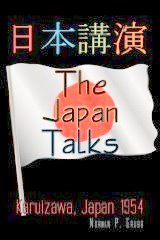More on the Senkaku/Diaoyu Islands
By NICHOLAS KRISTOFI blogged recently about the dust-up in Asia between China and Japan over the uninhabited islands known as the Senkakus in Japan and the Diaoyu islands in China. Both claim them, as does Taiwan for good measure. I argued that China appeared to have a slightly better claim to them, although they might also plausibly be terra nullis, not belonging to any nation. Here’s the latest on the tiff.
Japan, which doesn’t even acknowledge that there is a territorial dispute, protested my blog post and wrote me a letter outlining some of its arguments. I’m not persuaded — it seems silly to say that China didn’t protest the seizure of a few barren rocks, when it was so weak that it had lost the entire province of Taiwan — but Japan does have valid points to make. I wish it would seek referral of the issue to the International Court of Justice, setting a precedent for legal judgments rather than brute force to settle conflicting claims.
I’ve been following the ups and downs on the islands since the 1980’s and wrote about them with my wife in our 2000 book about Asia, “Thunder from the East.” Alas, I’ve never found a way to land on them, and I do worry that the U.S. could be drawn into the dispute. As I noted in my previous item, the U.S. in theory is required to defend Japan’s claim to the islands, based on the wording of the U.S./Japan Security Treaty. In practice, we wouldn’t, but our failure to do so would cause reverberations all over Asia. In any case, here are excerpts from the Japanese letter of protest, apparently written at the request of the Japanese Foreign Minister (who knows who reads this blog?). Since I suggested that the islands were more likely China’s, I want to give them a chance to respond:
1) Since 1885, surveys of the Senkaku Islands had thoroughly been made by the Government of Japan through the agencies of Okinawa Prefecture and by way of other methods. Through these surveys, it was confirmed that the Senkaku Islands had been uninhabited and showed no trace of having been under the control of China. Based on this confirmation, the Government of Japan made a Cabinet Decision on 14 January 1895 to erect a marker on the Islands to formally incorporate the Senkaku Islands into the territory of Japan.
2) Since then, the Senkaku Islands have continuously remained as an integral part of the Nansei Shoto Islands, which are the territory of Japan. These islands were neither part of Taiwan nor part of the Pescadores Islands which were ceded to Japan from the Qing Dynasty of China in accordance with Article II of the Treaty of Shimonoseki which came into effect in May of 1895.
3) Accordingly, the Senkaku Islands are not included in the territory which Japan renounced under Article II of the San Francisco Peace Treaty. The Senkaku Islands have been placed under the administration of the United States of America as part of the Nansei Shoto Islands, in accordance with Article III of the said treaty, and are included in the area, the administrative rights over which were reverted to Japan in accordance with the Agreement Between Japan and the United States of America Concerning the Ryukyu Islands and the Daito Islands signed on 17 June 1971. The facts outlined herein clearly indicate the status of the Senkaku Islands being part of the territory of Japan.
4) The fact that China expressed no objection to the status of the Islands being under the administration of the United States under Article III of the San Francisco Peace Treaty clearly indicates that China did not consider the Senkaku Islands as part of Taiwan. It was not until the latter half of 1970, when the question of the development of petroleum resources on the continental shelf of the East China Sea came to the surface, that the Government of China and Taiwan authorities began to raise questions regarding the Senkaku Islands.
5) Your column focuses on historical manuscripts such as “Chinese navigational records” and “a 1783 Japanese map” to make the point that China has a better claim to the Senkaku Islands. However, please note that none of the points raised by the Government of China as “historic, geographic or geological” evidence provide valid grounds, in light of international law, to support China’s arguments regarding the Senkaku Islands.
Your thoughts?
















No comments:
Post a Comment